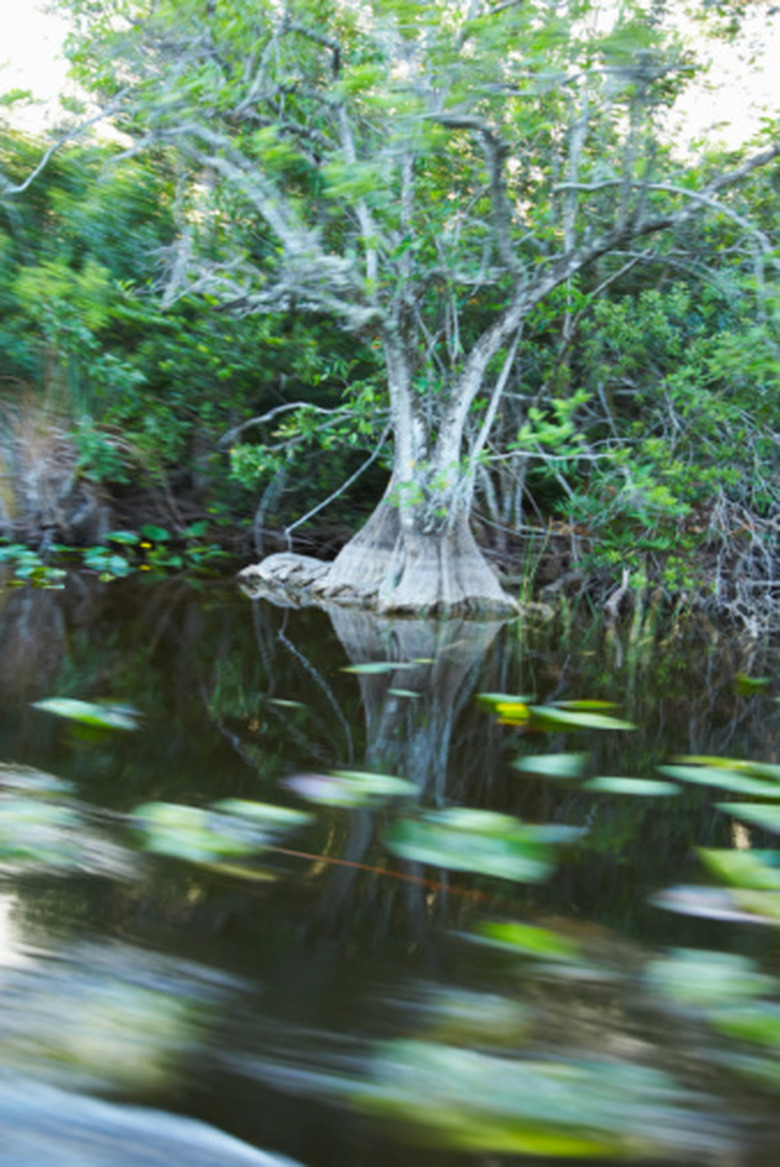Florida Cypress Tree Characteristics
There are two principal types of cypress that grow in Florida: pond cypress and bald cypress. Both are conifers. But unlike many well-known conifers, they are both deciduous, meaning they lose their leaves and their cones each winter. Both pond cypress and bald cypress grow in wetlands, such as along river floodplains, in marshes or along shallow ponds. They belong to the Taxodium genus and the distichum species. Within the species, bald cypress is termed the "distichum" variety and pond cypress the "nutans" variety.
Size and Shape
Bald cypress can grow to an extremely large size, measuring up to 150 feet tall with trunks measuring 12 feet across. By contrast, the pond cypress does not grow to nearly such large proportions. When they receive ample watering, either variety can grow quite rapidly, reaching a height of 12 feet in three years' time. Bald cypress leaves have a featherlike shape, whereas pond cypress leaves grow in like scales, very densely packed together. Both pond cypress and bald cypress form root outgrowths popularly called "knees," the knobby, vertical extensions from their root system, often seen protruding out of the shallow water where the trees most typically grow.
Habitat Preferences
Whether you're planting pond cypress or bald cypress, keep in mind that their natural habitats are usually inundated with water for the majority of the year. These habitats offer slow but steady flows of mineral-rich water from which the trees derive necessary nutrients. If you plant a cypress in typical soil that hasn't been enriched with organic matter, it may show signs of various mineral deficiencies. The habitat also protects cypress from fire outbreaks. Though both trees favor these marshy, fire-resistant areas, pond cypress is considerably more tolerant of fire than bald cypress due to its thicker bark. Both trees require relatively little oxygen, as occurs naturally in the shallow and poorly drained ponds where the trees thrive. Often cypress grow in large, dense populations, known as cypress domes for the rounded effect of the trees' canopies. A wide range of soil types will accommodate cypress growth provided that they are sufficiently moist.
Propagation
When planting cypress, you can ensure most successful propagation of new plants by planting seedlings outdoors instead of planting seeds directly. Seedlings measuring 12 inches or taller and at least 1/4 inch diameter at the largest part of the root will adapt best to planting. Cypress seedlings are quite vulnerable, requiring moderately packed soil with minimal foot traffic. They grow best when planted between November and March, during the plant's dormancy, and exposed to ample water.
